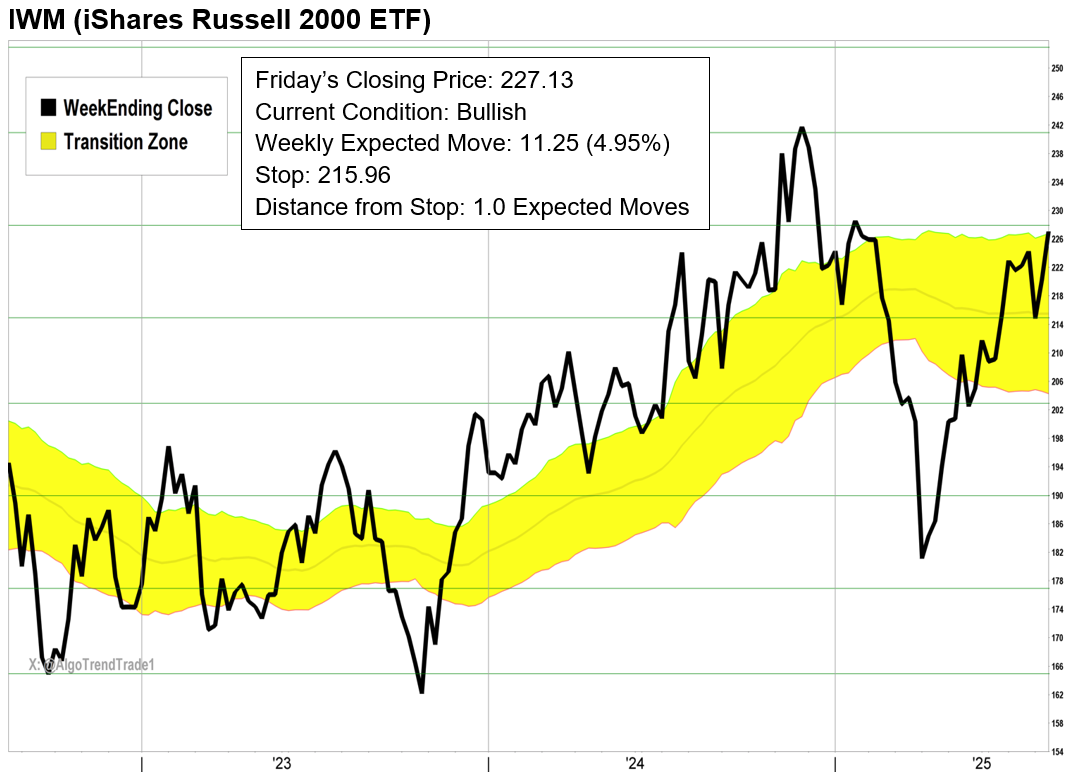IWM Finally Enters a Bullish Condition: A Deep Dive Into the iShares Russell 2000 ETF
Unveiling the Dynamics Behind IWM’s Positive Market Shift
In a period marked by volatility and economic uncertainty, the iShares Russell 2000 ETF (IWM) has entered a bullish phase, signaling a potential shift in the small-cap market landscape. This transition is not just a fleeting market sentiment but is backed by technical indicators, macroeconomic factors, and shifting investor perspectives. Let's explore the reasons behind this bullish sentiment and what it means for investors looking to capitalize on this trend.

Key Takeaways:
IWM is experiencing a positive technical environment, with prices exceeding both its SMA and EMA.
Macroeconomic conditions, including easing inflation and potential Fed rate cuts, are tailwinds for small-cap stocks.
Increasing investor optimism and strategic positioning make small-cap stocks an attractive option for diversification and growth.
Understanding the Bullish Condition
Technical Indicators and Market Performance
IWM, a prominent ETF tracking the small-cap Russell 2000 Index, has shown robust technical signals. As of the latest data, IWM's price is trading above its critical moving averages—both the SMA and EMA—hovering around $222, with a Fair Market Value (FMV) of $227.94. These indicators reflect a positive momentum shift that typically signals an upward trend in the market.
The Moving Average Convergence Divergence (MACD) analysis further underscores this bullish sentiment, with four recent bullish crossovers indicating growing momentum. Despite a significant drop in trading volume compared to the previous day, this pattern often follows a breakout, as traders pause to reassess and digest gains.
Macroeconomic Influences
Several macroeconomic factors are contributing to this bullish environment. Notably, softer inflation data has increased the probability of the Federal Reserve implementing rate cuts, a development that historically benefits small-cap stocks like those in IWM. Additionally, the growing optimism among small businesses and favorable earnings forecasts provide a supportive backdrop for continued growth in this segment.
Recent articles, such as those from Zacks Investment Research, highlight the boost small-cap ETFs, including IWM, receive from these economic conditions. The possibility of rate cuts combined with a more optimistic business outlook is a recipe for potential upside.
Market Sentiment and Investor Behavior
Investor sentiment towards small-cap stocks has been generally positive, as reflected in recent news articles. After years of underperformance compared to the S&P 500, small-cap stocks are gaining renewed interest. Analysts point to easing inflation and potential rate cuts as major factors driving this trend, suggesting that investors are starting to look beyond large-cap tech stocks for value and growth opportunities.
An article from MarketWatch discusses how the stock market, including IWM, is entering a bullish period, emphasizing the importance of strategic positioning in the current economic climate.
IWM: A Snapshot of Key Metrics
Metric | Value |
|---|---|
Current FMV | $227.94 |
Avg. SMA/EMA | ~$222 |
Total Holdings | 1,985 |
Top Holding Weight | 0.64% (CRDO) |
Recent Dividend | $0.52 (Mar 2024) |
This snapshot of IWM provides insight into its current position within the market. With a diverse range of holdings and a focus on small-cap U.S. equities, IWM offers investors exposure to a segment poised for potential growth.
Practical Applications for Investors
For investors considering an entry into the small-cap market, IWM presents an attractive opportunity, given its current bullish condition. Here are some strategies to consider:
Diversification: IWM can be an effective tool for diversifying a U.S. stock portfolio, particularly for those looking to balance large-cap exposure with growth potential in small-cap stocks.
Monitoring Economic Indicators: Keeping an eye on inflation rates and Federal Reserve policy decisions will be crucial, as these factors directly impact small-cap performance.
Active Management: Given the volatile nature of small-cap stocks, active monitoring and management of positions in IWM are recommended to capitalize on short-term market movements.
Looking Ahead
The bullish condition of IWM, supported by both technical prowess and favorable macroeconomic conditions, offers a promising outlook for investors. As the market continues to evolve, staying informed and agile will be key to maximizing returns and navigating potential risks.
Embrace this opportunity to explore the dynamic world of small-cap investments and leverage the insights provided by DeepStreet.io to make informed and strategic decisions. Dive deeper into our comprehensive analyses and stay ahead in the ever-changing financial landscape.

.svg)
.svg)
.svg)
.svg)

.svg)

.svg)
















